|
Welcome to the Graduate Program
at Umass Boston
Here
you will find
information about the MS in
Applied Physics at Umass
Boston, the classes we provide for science
teachers that count towards the MEd
degree at UMass
Boston, and also the PhD in
Physics at UMass
Amherst, in which you may elect to have a research
adviser at UMass Boston. Below we describe research topics,
sources of financial support, and examples of employers in
Massachusetts who hire physics graduates. For further information about enroling in the MS in Applied Physics, send an email to Prof. Arnason, the director of the graduate program.
|
|
|
|
| |
|
|
The nationally ranked Applied Physics
Program
is intended primarily to prepare students
for rewarding technological careers in industrial
and government
research laboratories, although it also provides strong preparation for
subsequent training at the doctoral level.
Who
hires MS graduates in Physics? Many companies, including:
The Dana-Farber Cancer
Institute
Genworth
Financial
LEK
Consulting
LightLab
Imaging
Massachusetts
General
Newport
Corporation
State
Street
Woods
Hole Oceanographic Institute
Schlumberger-Doll
Following the initial
year of course work, qualified students may opt for an internship
placement in an industrial research laboratory in the area.
These positions provide further training and useful job
experience
in
preparation for a technological career. Alternatively, students may
undertake a thesis involving a project in one of the research
groups in the department. Faculty in the department pursue research in
the following areas...
|
|
|
|
|
|
Non-linear
Optics and Photonics
The research group of Prof.
Rao
works
on nonlinear optics, medical image processing, nano- and bio-
photonics, optical data storage, and optical power limiting and laser
eye protection. For recent publications and patents see Prof. Rao's homepage. |
|
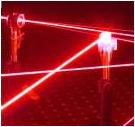
|
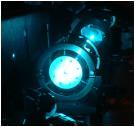 |
|
|
|
|
Biomedical Imaging and
Sensing
The research group of Prof.
Yelleswarapu works
on applications of fiber Bragg gratings for optical biosensing and
biomedical imaging, and development of advanced optical microscopes and
nanoscopes for investigating live cell dynamics.
|
|
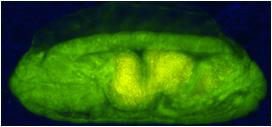
|
|
|
|
|
Condensed Matter and
Materials
The research group of Prof.
Arnason works
on the electronic properties of new materials, including noise in
electron glasses, and conduction and weak localization in fractal
stuctures and disordered phases.
|
|
|
|
|
|
|
|
Quantum Non-linear
Dynamics
The research group of Prof.
Sundaram
works on a range of topics in nonlinear quantum dynamics, including
Bose-Einstein condensation and
the quantum-to-classical transition. For further details
see Prof.
Sundaram's home page and the QNDC
group page.
|
|
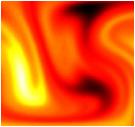
|

|
|
|
|
|
Quantum Many-Body
Systems
The research group of Prof.
Olshanii works on the behavior of
cold atom-gasses and atoms trapped in optical
lattices. They study such topics as superfluidity, phase transitions,
and
thermalization in
closed quantum systems. See Prof.
Olshanii's home page.
|
|
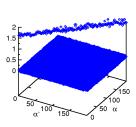
|
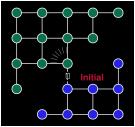
|
|
|
|
|
Quantum Measurement and
Control
The research group of Prof.
Jacobs works on continuous
quantum measurement and control, and applications in mesoscopic quantum
nano-electro-mechanical systems (QNEMS) and atom optics. See Prof.
Jacobs'
homepage, and the QNDC
page. |
|

|
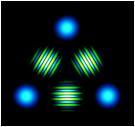
|
|
|
|
|
Non-linear
Dynamics in Biology
The research group of Prof.
Sundaram, in colaboration with Prof.
Killingback and Prof.
Indic,
work on problems in biology. Their current focus is on the properties
of dynamic networks, and applications to brain function.
|
|
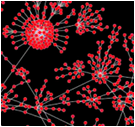
|
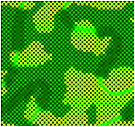
|
|
|
|
|
Semiconductor
Optoelectronics
The research group of Prof. Sun
works on nano- structures in semiconductors, such as
quantum wells and superlattices, and their applications in the design
of quantum cascade lasers. They also study plasmonics and
phonon dynamics. See Prof.
Sun's homepage.
|
|
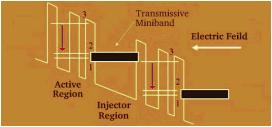
|
|
|
|
| Requirements for the MS degree |
|
To complete the MS in applied physics
requires
that you take 3 theory classes, 3 laboratory classes and 1
elective class that may be either. Each class takes one semester, and
each is worth 4 credits, for a total of 28 credits. In addition, you
complete an on-campus thesis or an off-campus internship or
research laboratory, which counts for 6 credits. The MS degree thus
has a total of 34 credits, and usually takes 4 semesters to complete.
During the course of the degree students also obtain experience and
training in
scientific comunication.
The MS classes are grouped into four clusters: core
theory classes, laboratory classes, general methods and
interdisciplinary
classes, and classes in specific applied topics.
Core
Theory Classes
611
Classical Mechanics and Fluid Mechanics
612
Electromagnetic Theory
613
Quantum Mechanics, Atomic, and Molecular Physics
614
Thermodynamics and Statistical Mechanics
Laboratory
Classes
600
Electronic Instrumentation I: Analog
601
Electronic Instrumentation II: Digital
602
Laser Optics Laboratory
632
Advanced Laser Optics (with Laboratory)
General
Methods and Interdisciplinary Classes
616
Mathematical Methods for Physicists
640
Scientific Computation
650
Introduction to Stochastic Processes
Classes
in Applied Topics
609
Physics of Medical Imaging
610
Topics in Medical Imaging
615
Solid-State Physics
621
Physics of Semiconductor Materials
622
Solid-State Electronic Devices
You may mix classes from different clusters to
tailor a program to your interests and future goals. |
|
|
|
| Qualified students are eligible to apply
for departmental teaching
assistantships
or research assistantships with individual faculty. Opportunities also
exist
for other
on-campus support from programs like WISP
as well as off-campus internships. |
|
|
|
|
|
|
|
| If you are interested in doing a PhD with
one of the faculty at UMass Boston, then you can apply to enter the PhD program at UMass Amherst.
This allows
you to choose your research adviser from amoung the faculty at UMass
Amherst, as well as the faculty at UMass Boston. For
details about the requirements for the PhD at UMass Amherst, and PhD
advisers at Amherst, see the Amherst Physics Department
website. |
|